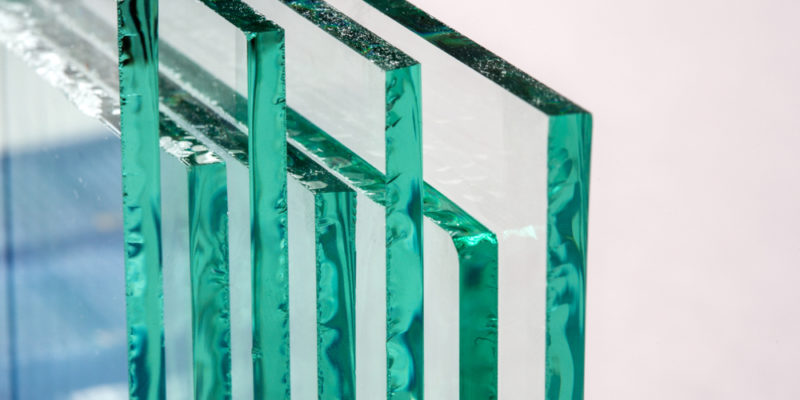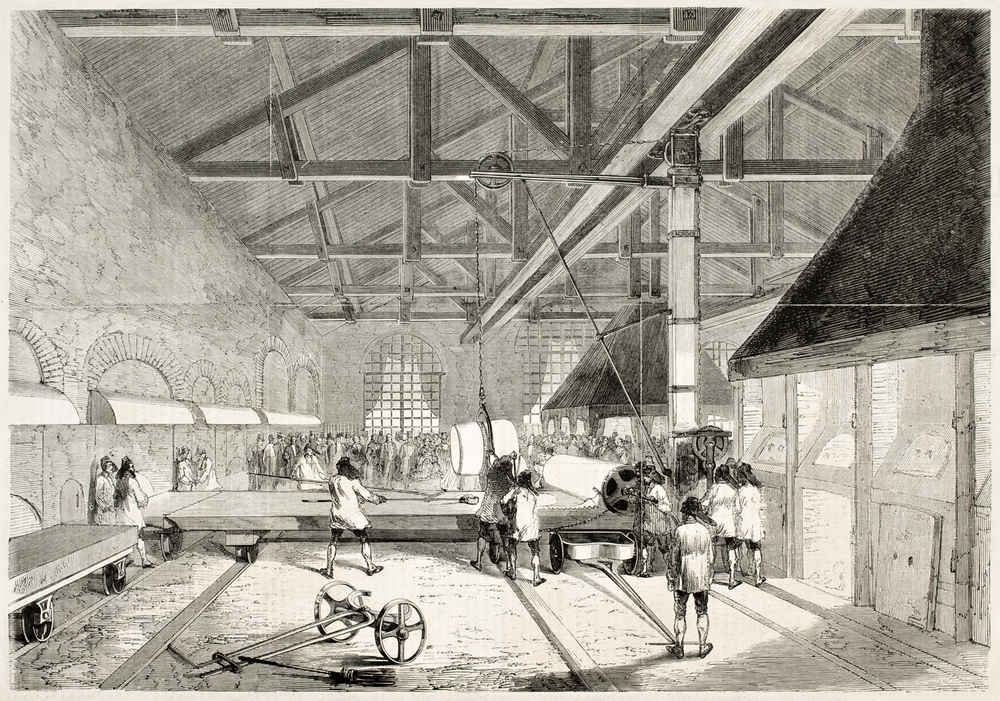Nowadays, glass is something that most of us take for granted, there’s not many places we can go where it can’t be found. From glass bottles to mirrors, to mobile phone screens and of course double glazed windows – it’s proven itself to be an extremely versatile creation.
But where did glass come from? When was glass invented?
While it might be one of the most widely used materials in the world, it’s also one of the most misunderstood. Many items we consider to be glass aren’t actually made of glass at all and are in fact a type of ceramic – having an entirely different manufacturing process to the type of glass we supply here at KLG. Glass products such as window panes, splashbacks and tabletops are usually called flat glass, or plate glass as it’s also known.
In this article we’re going to dip our toes into the history of glass production, flat glass in particular, and how it came to be such an integral part of our lives…
What is the History of Glass?
Not much is known about the first attempts to make glass, but it’s widely believed that glassmaking first became a thing over 4,000 years ago in the ancient Middle East region known as Mesopotamia (where Iraq, Kuwait and eastern Syria are now located). The ancient Romans were the ones to attribute the birth of glass to this area because the beach sands were known to be heavily used in this area for glass making.
What is Glass Made Out Of?
It’s also believed that the ability to create glass was developed over a long period of time, with many experiments mixing silica (sand) and quartz with an alkali (soda ash) being the basis for early glass products.
There’s also a theory that glass making came to be as a result of other high heat industries such as pottery, where potters would use the mixture to create shiny, colourful glazes for their wares. But this is just a theory and no one really knows for sure.
Where was Glass First Made?
What we do know is that the ancient Egyptians were the ones to eventually develop glass as a unique substance around 1500 BC.
FUN FACT: Even though modern technology allows us to produce glass in much larger quantities these days, the initial recipe of ingredients needed for basic glass that was perfected in ancient Egypt, remains almost the same. If it ain’t broke, don’t fix it, right?
The eastern coast of the Mediterranean Sea became the centre of glass manufacturing, with Egypt and Syria leading the way. The raw ingredients would be melted together in a workshop to make ingots or raw chunks of usable glass that could be reworked and molded or slumped into different forms. Glassmakers also knew how to colour glass using metallic oxides such as cobalt and copper oxide – colourants that are still used today.
Glass making was a very slow process and for a long time it remained largely unchanged, that was until around 100 BC when a Syrian craftsman invented the blowpipe. This revolutionary creation made glass production easier, faster and cheaper. As a result, glass production flourished in the Roman Empire, spreading throughout all of the countries under its rule, especially Italy.
Fast forward a couple of hundred years to around 100 AD and the Romans of Egypt were starting to develop the first semblance of a flat glass window pane by rolling out hot glass onto a smooth surface. Up to this point, glass had been reserved for creating decorative items such as plates, bowls and jewellery, so the production of window panes was a huge turning point in glass production. Considered the ultimate luxury at the time, the windows were neither clear nor even, but they were good enough to serve their intended purpose.
By 1000 AD, the city of Alexandria had become the epicentre for glass but by the 13th century, Europe had turned the production of glass panes into an art form. Stained glass windows were now becoming a popular sight in churches and cathedrals across the continent, with designs becoming more elaborate and ambitious as the technique developed.
By the mid-1600’s, the French were starting to perfect a method for producing a product called “broad glass”. Long glass cylinders were blown, these were then cut and unrolled to form an almost flat rectangle. The rectangle was then ground and polished to create a clearer, more even pane.
How Was Glass Made in the 1800’s?
By the late 1800’s glass was being produced and used in almost every building across the world. New additives were being put into the recipe which meant that huge cylinders of glass could be blown and then allowed to cool before being cut with diamond. The glass would then be reheated and slumped onto another piece of polished glass which helped to preserve the surface.
Things changed at the beginning of the 1870’s when one Mr William Pilkington (you might recognise the name from Pilkington Glass) invented a machine which revolutionised the production of glass for commercial use, allowing larger sheets of glass to be produced at a quicker pace and for less money. It was the first of many innovative glass production inventions to come from the Pilkington family.
Glass in the 1900’s
Glass manufacturing processes didn’t change much until the late 1950’s when another member of the Pilkington family, Sir Alistar Pilkington, invented the float glass process. This method was a huge turning point for glass production and paved the way for many of the processes we still use today.
In the float glass process, molten glass (which reaches temperatures of in excess of 1000 degrees centigrade) is poured continuously from the furnace onto a large shallow bath of molten metal, usually tin. The glass “floats” on top of the tin (which has a much lower melting point), cooling as it spreads. The thickness of the glass produced is controlled by the speed at which the glass is poured.
Glass is much less expensive to produce this way and today, 90% of the world’s flat glass is created using the float glass process. Float glass is really versatile, too. Silver backing can be added to create mirrors, laminated glass can be made by adding a plastic interlayer between two sheets, and heating and rapid cooling creates tempered glass.
The history of glass is long and some of the earliest processes still remain today, making it one of the oldest crafts in the world. But if there’s one thing we know for sure… we wouldn’t be without it!


